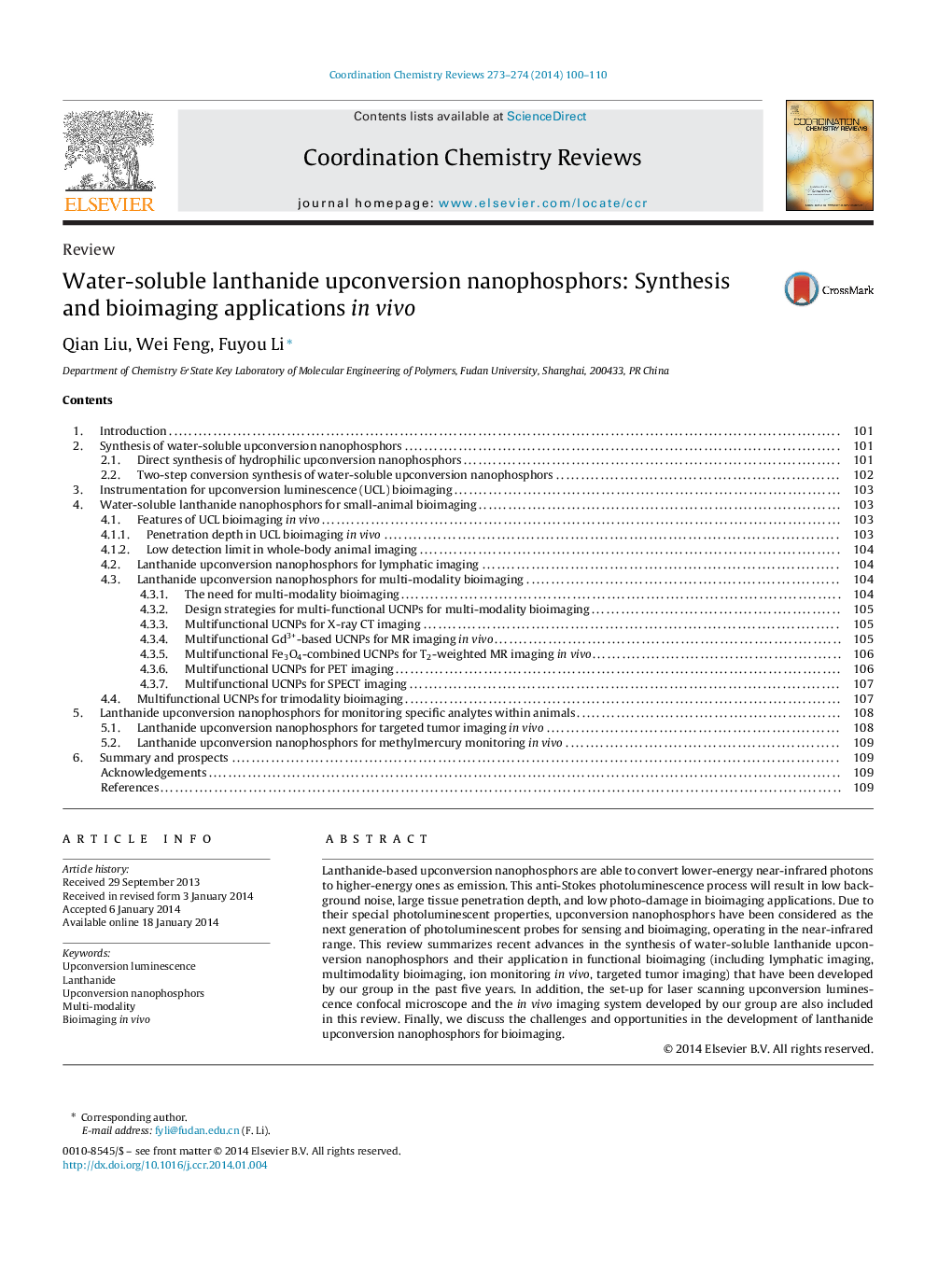| Article ID | Journal | Published Year | Pages | File Type |
|---|---|---|---|---|
| 1300956 | Coordination Chemistry Reviews | 2014 | 11 Pages |
Lanthanide-based upconversion nanophosphors are able to convert lower-energy near-infrared photons to higher-energy ones as emission. This anti-Stokes photoluminescence process will result in low background noise, large tissue penetration depth, and low photo-damage in bioimaging applications. Due to their special photoluminescent properties, upconversion nanophosphors have been considered as the next generation of photoluminescent probes for sensing and bioimaging, operating in the near-infrared range. This review summarizes recent advances in the synthesis of water-soluble lanthanide upconversion nanophosphors and their application in functional bioimaging (including lymphatic imaging, multimodality bioimaging, ion monitoring in vivo, targeted tumor imaging) that have been developed by our group in the past five years. In addition, the set-up for laser scanning upconversion luminescence confocal microscope and the in vivo imaging system developed by our group are also included in this review. Finally, we discuss the challenges and opportunities in the development of lanthanide upconversion nanophosphors for bioimaging.
Graphical abstractFigure optionsDownload full-size imageDownload high-quality image (108 K)Download as PowerPoint slide
